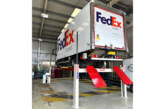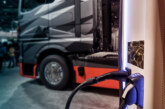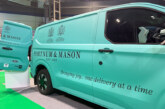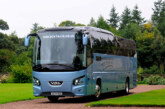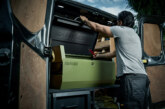How ZF fights counterfeiting to ‘Keep it Real’

ZF Aftermarket has recently outlined its ‘Keep it Real’ campaign on the subject of counterfeiting – from the dangers to drivers, passengers & other road users, to the cost implications to the global economy, through to the damage done to brand, reputation and the job market.
But have you ever wondered how ZF finds out about these fake products: where in the world they are, how they are being sold and who is selling them? Or thought about the processes that must be followed to track and stop these parts from entering the supply chain in the first place – or indeed about the teams of people who work behind the scenes of the ZF business to help keep us all safe and protected?
ZF Aftermarket has decided to delve deeper into this area, to find out what really goes on behind the scenes.
Global fight – Global operation
ZF says it takes the subject of counterfeiting seriously, and this is highlighted by the depth and breadth of its intellectual property team. The team is based at its departmental HQ in Germany, but has a reach on a global scale.
It’s a complicated and murky world, but in terms of understanding, there are three major areas that the team work to eliminate: the counterfeit parts themselves, the copied packaging, and the fake advertisements and offers which are used to get the fake products into the market.
The team claims to work closely with investigators, police, customs officers, ZF partners, and its own ZF technical and sales experts worldwide – and initial intelligence regarding potential infringement of intellectual property can be passed to them from any of these sources.
There are a number of things that the team looks out for when it comes to spotting fake products – but in many cases, these parts are visually indistinguishable to the originals at first glance. Before any raid can be organised, and when photographic evidence is not sufficient, the team must initiate test purchases of suspicious goods and send them to ZF locations to check the technical characteristics of the products in detail.
This team does not take any chances, according to the company. If there’s ever any doubt over the integrity of the find, the confiscated items are forensically examined. The products are reportedly tested on a ZF test bench for functionality, technical performance, quality and longevity. And these tests take as long as they need to for the team to be certain.
Once the ZF team has firm intelligence of counterfeit products or packaging out there in the market, they must move quickly – often only having what ZF claims are three working days to pounce, based on local legal requirements and as part of the strategy that the counterfeiters use means they and the counterfeit products or packaging rarely stay in one place for very long.
And as counterfeiting is a global phenomenon, the company says this is no easy task.
This part of the process starts with filing a request with the relevant local agency or authority asking them to start the governmental procedures and initiate a raid. Any raid carried out anywhere in the world is an administrative or criminal action, and ZF reportedly has no influence over how or when this is carried out.
Following a raid, the ZF team will be told what product has been found and in what numbers. And then it’s over to the company to investigate – and ZF must bear the costs for this investigation – at least at first, it says.
Anything found to be fake is immediately destroyed and the prosecution process begins. The company says illegal earnings are generally confiscated and punishments for the counterfeiters vary, depending on the number of products, the economic effects, and the country where the intellectual property infringement happened.
Typically, it starts with a monetary penalty for first offenders and moves up to prison terms of months or even years for repeat offenders.
In some cases, there may be compensation payments or even punitive damages as part of the decision. If this happens, ZF apparently invests this money back into the fight against the counterfeiters.
Fast Facts:
Most commonly faked ZF parts: ‘LEMFÖRDER’ chassis parts, ‘SACHS’ clutches, ‘TRW‘ brake pads & WABCO valves
The most ‘gruesome’ find: Formerly inflated airbags ‘remanufactured’ into the steering wheel with no functionality… now just imagine if a child was given a lift in this vehicle!



